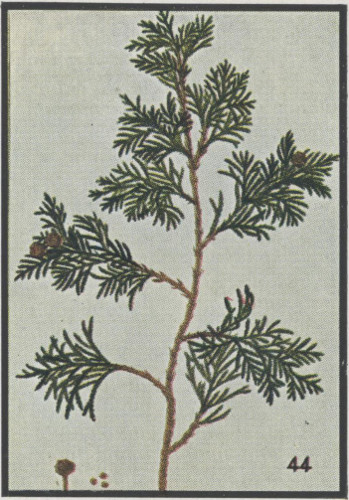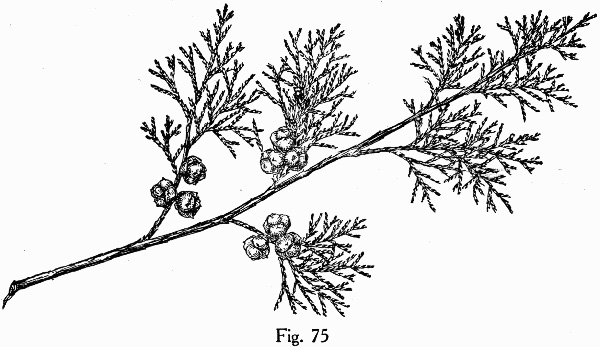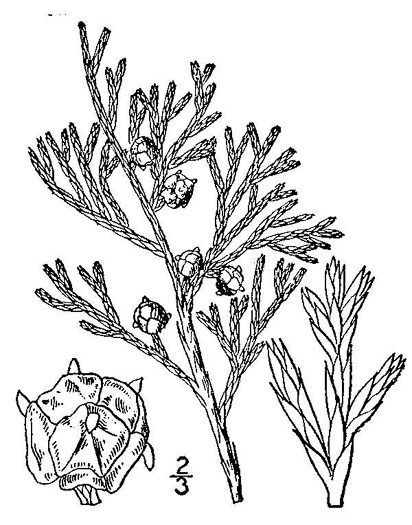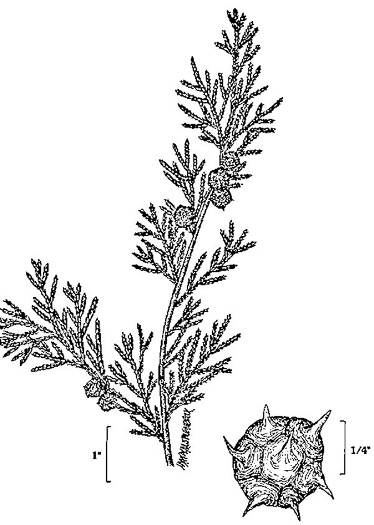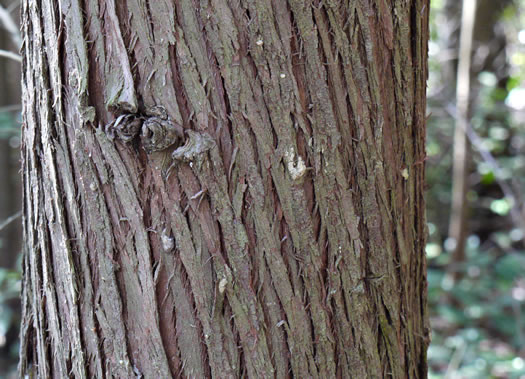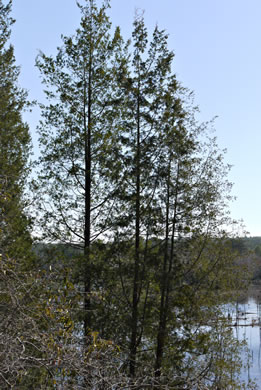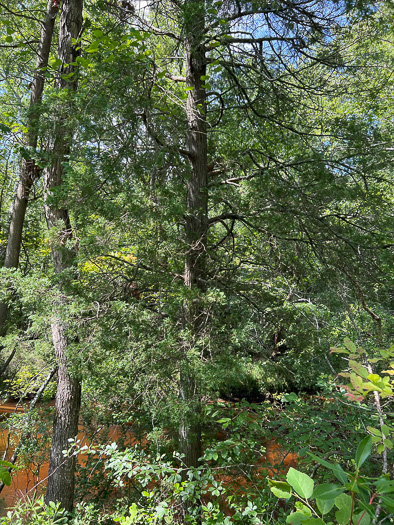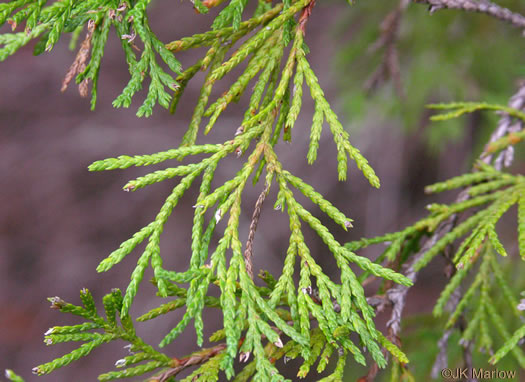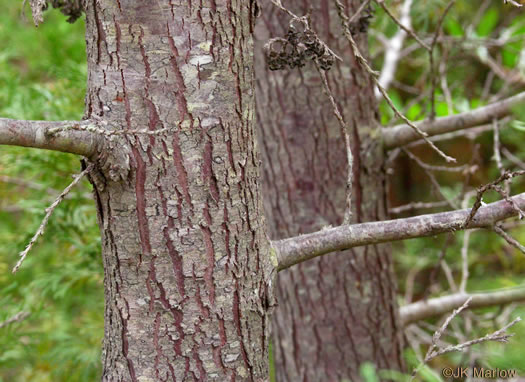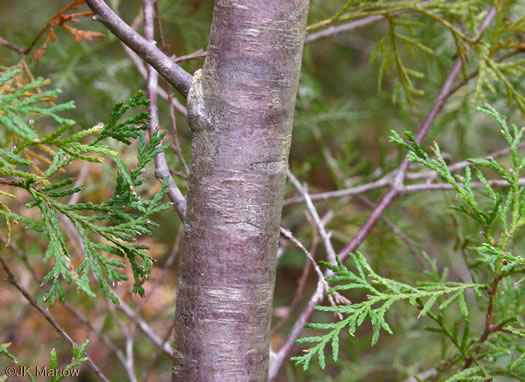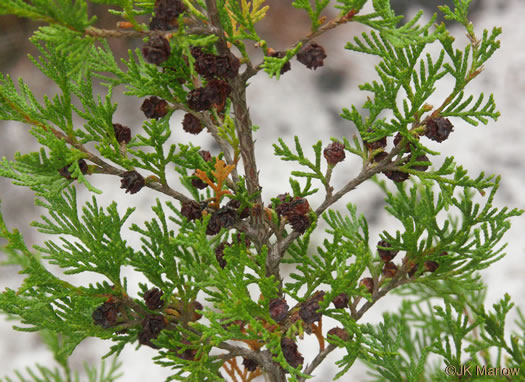Spermatophytes (seed plants): Gymnosperms (non-flowering plants): Conifers: Cupressales
WEAKLEY'S FLORA OF THE SOUTHEASTERN US (4/24/22):
Chamaecyparis thyoides var. thyoides
FAMILY
Cupressaceae
Go to FSUS key
Dig deeper at SERNEC, a consortium of southeastern herbaria.
You may also want to check Trees, Shrubs, and Woody Vines of North Carolina
Learn more about Atlantic White Cedar from the Vascular Plants of North Carolina.
INCLUDED WITHIN
PLANTS NATIONAL DATABASE:
Chamaecyparis thyoides
FAMILY
Cupressaceae
INCLUDED WITHIN Flora of North America
Chamaecyparis thyoides
INCLUDED WITHIN VASCULAR FLORA OF THE CAROLINAS (Radford, Ahles, & Bell, 1968) 018-01-001:
Chamaecyparis thyoides FAMILY Cupressaceae
INCLUDED WITHIN Manual of the Southeastern Flora (Small, 1933, 1938)
Chamaecyparis thyoides
COMMON NAME:
Atlantic White Cedar, Juniper
To see larger pictures, click or hover over the thumbnails.
JK Marlow jkm130406_778
April Richmond County GA
Fort Gordon
Absent in the outer Coastal Plain of SC & GA, occurring primarily in the fall-line Sandhills, per Weakley's Flora (2022).
JK Marlow jkm091017_056
October Sumter County SC
Manchester State Forest
Its small, evergreen, opposite scale-like leaves aid in recognition, per Trees of the Southeastern United States (Duncan & Duncan, 1988).
JK Marlow jkm091017_063
October Sumter County SC
Manchester State Forest
Bark gray to reddish-brown, thin, with narrow fissures forming flat ridges, per Native Trees of the Southeast, An Identification Guide (Kirkman, Brown, & Leopold, 2007).
JK Marlow jkm091017_068
October Sumter County SC
Manchester State Forest
Seed cones become woody, brown, and stalked after opening, per Native Trees of the Southeast, An Identification Guide (Kirkman, Brown, & Leopold, 2007).
![]() COMPARE
conifers (not including Pines)
COMPARE
conifers (not including Pines)
WEAKLEY'S FLORA OF THE SOUTHEASTERN US (4/24/22):
Chamaecyparis thyoides var. thyoides
FAMILY
Cupressaceae
INCLUDED WITHIN
PLANTS NATIONAL DATABASE:
Chamaecyparis thyoides
FAMILY
Cupressaceae
INCLUDED WITHIN
Flora of North America
Chamaecyparis thyoides
INCLUDED WITHIN
VASCULAR FLORA OF THE CAROLINAS (Radford, Ahles, & Bell, 1968) 018-01-001:
Chamaecyparis thyoides
FAMILY
Cupressaceae
INCLUDED WITHIN
Manual of the Southeastern Flora (Small, 1933, 1938)
Chamaecyparis thyoides
If a search such as "Carex leptalea var. leptalea" doesn't deliver the results you want, try "Carex leptalea".
Or, to minimize chances of a misspelling, try just "Carex le".
Less is more: If "pencil flower" doesn't deliver the results you want, try "pencil".

